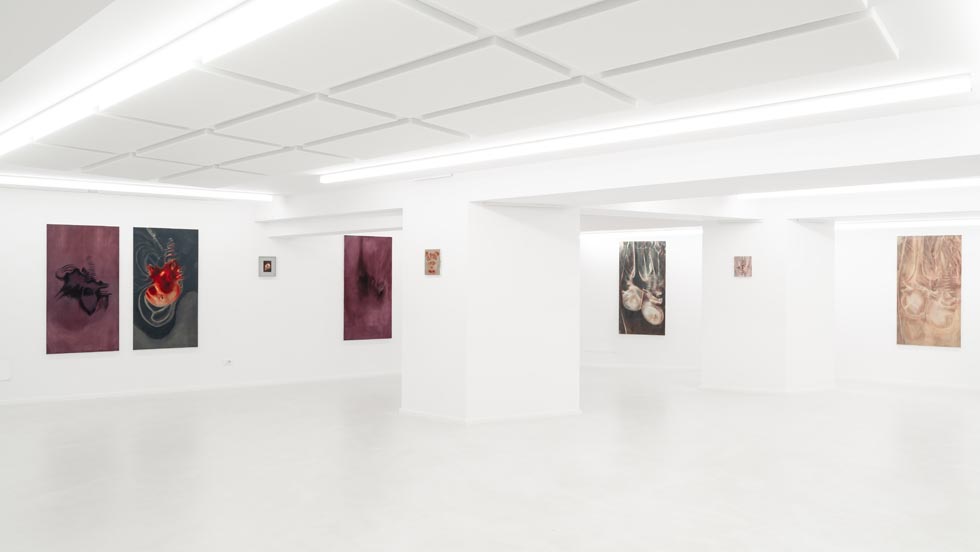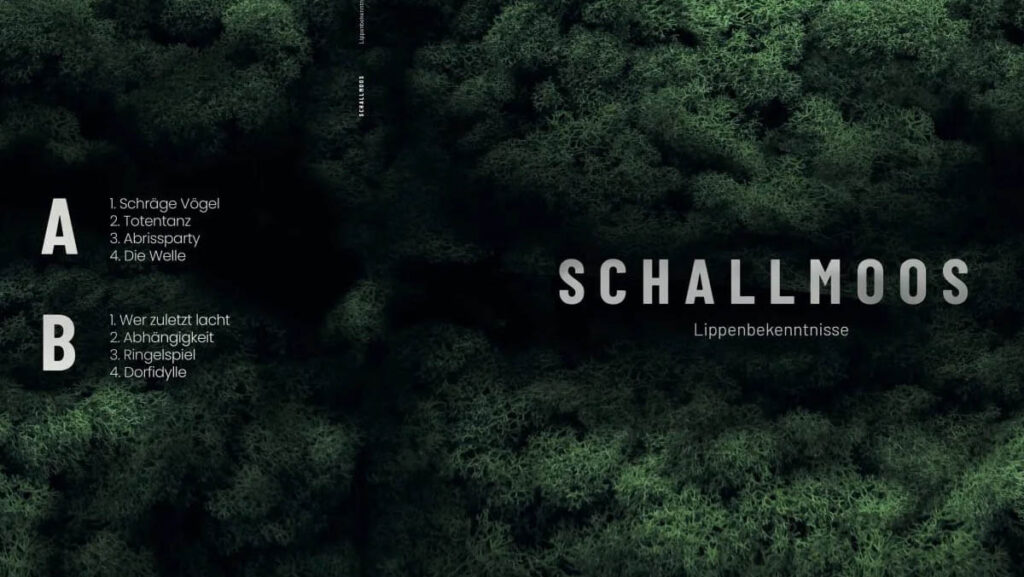
“Don’t Miss The Cue“ is an extremely well-designed and conceptually constructed exhibition with many details. A world that you could immerse yourself in—how did the world come about?
Thank you! The concept of a journey through a deconstructed backstage of a theater or performance space is deeply personal and resonates with my development as an artist and my background as a scenographer and costume designer.
From a young age, I have always loved creating worlds and immersive environments that evoke specific feelings, emotions, and even visceral responses. Theatres, as spaces of transformation and escapism, have always been integral to my personal narrative. I may have subconsciously chosen to pursue performance design to gain control over the environments I create and the identities I craft for the stage—a quest for the visibility I craved as a young migrant woman. Much of my time (while finding my voice as a creative) was spent navigating the hidden, narrow theater corridors filled with diverse artifacts, racks, props, and costumes, which, when combined, often presented mismatched narratives.

Reflecting on my migratory journey through Uzbekistan, China, Russia, and the UK, I find a profound connection to this metaphorical voyage through the liminal backstage. The scenography I dreamt up for the pavilion is this labyrinthine transient space that gradually distorts familiar shapes of backstage storage units, like metal clothing rails and flight cases, transforming them into environments and objects reminiscent of those commonly found in and around Uzbek homes and streets. These shapes come not only from our collective memories but are also inspired by Sofia Seitkhalil’s photography of urban spaces in Tashkent (Sofia is also part of Qizlar).
I envision the pavilion as a cohesive whole, a unified statement where all elements—installations, videos, sound, light, etc.—successfully interact and converse with each other. They are integral parts of a unified experience and cannot be separated.
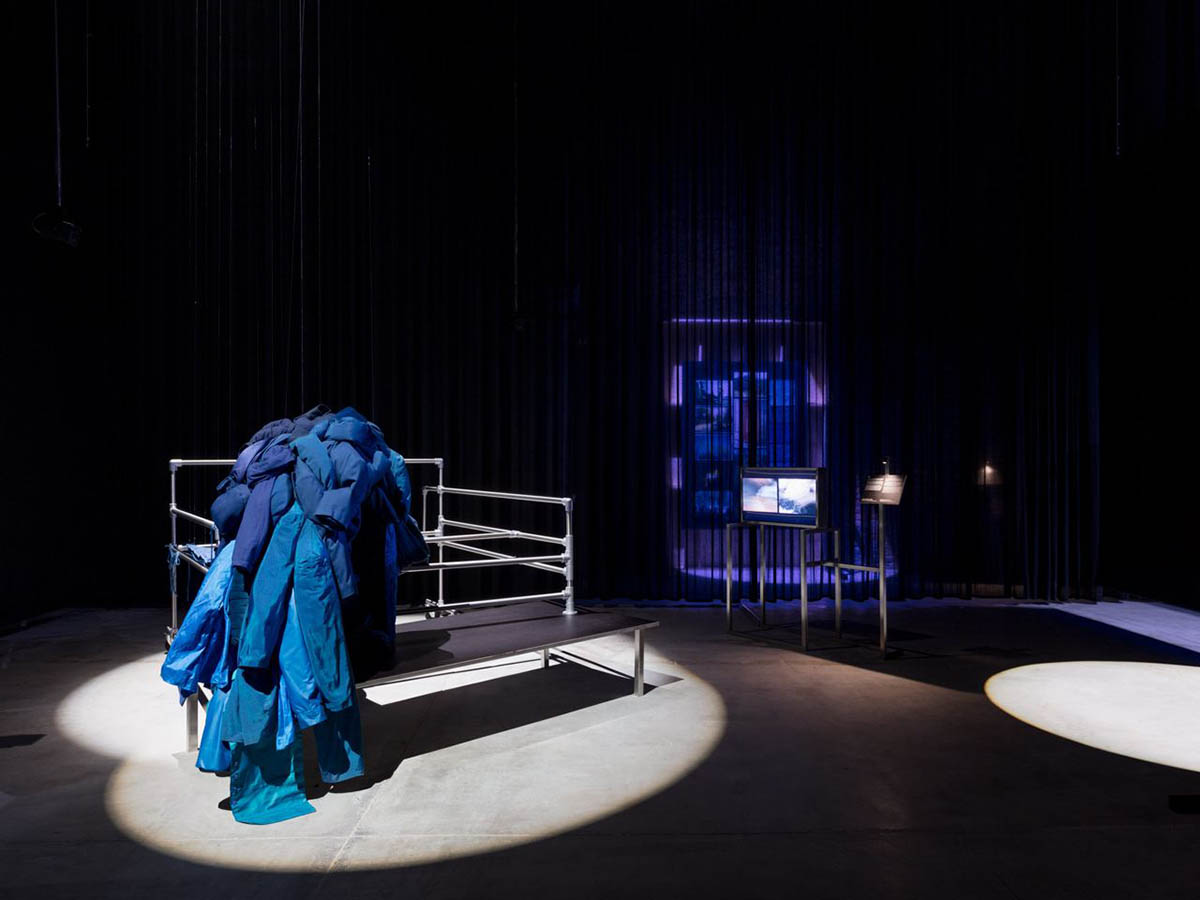

Aziza Kadyri, You are an artist and curator; you worked with Qizlar Collective, which you co-founded with Anastasia Sever. What are the main concepts of Qizlar, and how important were they for the pavilion exhibition?
Qizlar is a self-organized grassroots collective of young women artists, activists, and creatives from Uzbekistan. We have seven co-founders. Qizlar Collective is built on the ideals of female collectivity, solidarity, mutual support, and creating opportunities for each other. In our work, we emphasize community involvement and strive to establish inclusive platforms where women of all backgrounds can authentically express themselves. Our mission is to produce new knowledge from an intersectional and decolonial perspective. We are committed to the principle of „nothing about us without us“ in our approach to developing various artistic, educational, or socially engaged projects.
The pavilion stands as a testament to this amazing power of collaboration. It represents a significant collective endeavor that not only engaged the participating artists but also involved our broader community of incredibly inspiring women, who contributed to the research, performances, and interviews with great generosity, graciously sharing their diverse experiences.

Kamila Zakhidova contributed significantly by developing a research methodology grounded in FPAR principles. Anastasia Sever and Sofia Seitkhalil engaged with the community, leading discussions and interviews with our participants. Their work helped shape the main narratives in the pavilion, encoded in everything from video essays they created to textile sculptures. Gulnoza Irgasheva conceptualized and guided a series of site-specific performances, bringing together thirteen young women from Uzbekistan to explore themes of domesticity and everyday rituals, which are also presented in a video format. The six-channel sound piece, created by my long-term collaborator Fanis Sakellariou together with Tashkent-based Amalia Aibusheva, features stories told by the women in the community, as well as’sound portals’ to Uzbekistan and echoes of the backstage.
How long did you work on the whole preparation?
It’s challenging to pinpoint a specific timeline. For instance, my artistic research on suzani embroidery and AI has been ongoing for over a year, and our work with Qizlar began in 2022. While the concepts and installations presented in the pavilion are new, they encapsulate many years of accumulated knowledge, experience, and personal discoveries.

How important was the dialogue and possible compromise in the process?
As a collective, we’re always talking about how to work together, especially when it comes to handling disagreements and making compromises. This project presented the additional challenge of a rigid Biennale timeline, making it clear that while some goals were achievable, others were not entirely realistic. Despite these constraints, we embraced the opportunity to try and adapt as a team. Some ideas had to go, but that doesn’t mean we can’t return to them later.
We also enjoyed figuring out methods of effective communication between various teams involved in the process: developing work with the support of the Uzbekistan Art and Culture Development Foundation and the Centre for Contemporary Art Tashkent; exploring scenographic concepts with ADRA studio; exploring visual communication strategies and graphic design with Studio Pupilla; and so on.
One of the great outcomes of this experience is our collective commitment to continuing the research initiated for the pavilion. We recognize that the themes we explored deserve further investigation. Our goal is to dive deeper into these topics, expanding our understanding and perhaps even developing new projects that build on the foundation we have established.
This ongoing exploration will allow us to refine our methodologies and incorporate more diverse perspectives. Ultimately, we would love to produce work that continues to resonate, evolve, and open doors for others.
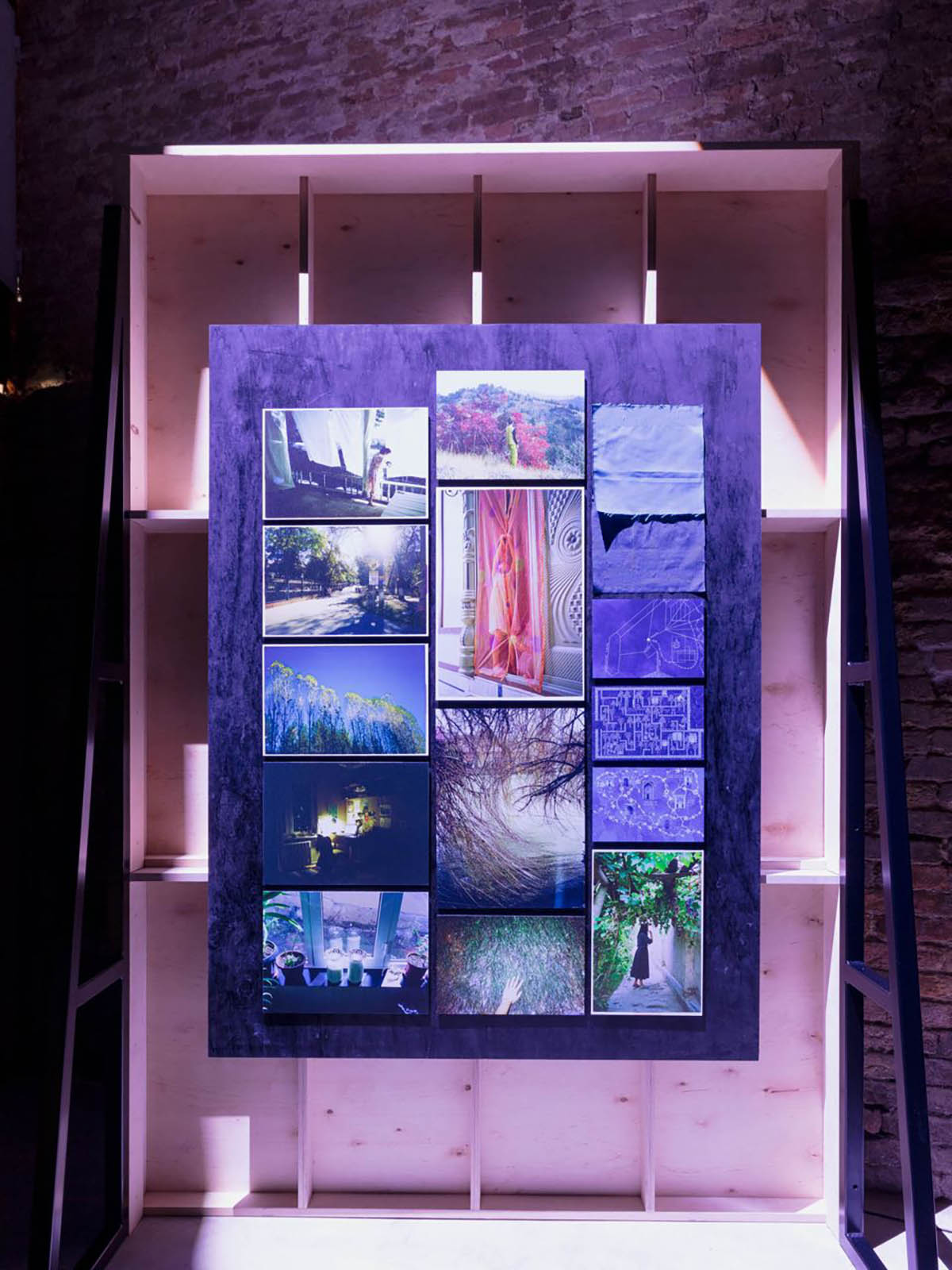

The importance of Uzbekistan’s female identity is highlighted through the concept; tell us a little bit more about it and how the historical part influenced the contemporary identity portrayed in this exhibition’s frame.
We were focusing on showcasing a section of the experiences of the younger generation of women who grew up during Uzbekistan’s independence that is, in the 1990s and after, navigating a unique mixed identity influenced by both religious and post-Soviet values. We strive to come to terms with our amalgamation of these influences, recognizing that embracing and exploring these intersections is more valuable than attempting to escape from them.
For instance, the performance video centers on the daily rituals practiced by women, particularly within the context of Islam and women’s agency. Contrary to the common belief that women in religious communities cannot be feminists and are unaware of their oppression, the exhibition reveals that these women have their own methods and ways of experiencing their subjectivity. These methods are not always perceptible through a secular, Western lens. By studying these daily practices and rituals, the exhibition aims to understand their forms of resistance and how they express their agency.
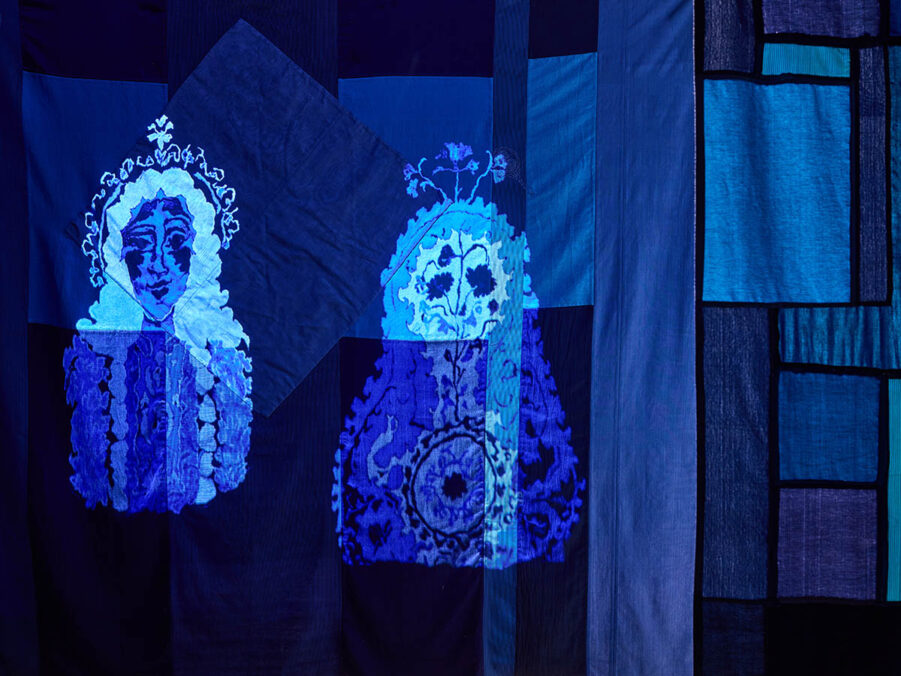
We also explore suzani embroidery as an example of how women have expressed their agency and identities over the centuries. The historical patterns we examine embody religious syncretism, intertwining nomadic astral beliefs, Zoroastrian influences, and Islam within a single ornament. By layering our contemporary identities onto these patterns, we contribute to these historical documents and continue the tradition of evolving these images over time. It was also great to have these conversations with Madina Kasimbaeva, the suzani master we collaborated with, and hear her perspectives on the future of the art of suzani, as well as her experience of women’s collectivity in relation to the craft.
The complex relationship between the physical body and the world that surrounds it was explored in the concept of the exhibition. How are the bridges built, and what can we learn from them?
The exhibition’s concept examined the relationship between the physical body and its surrounding world, making connections through participant-driven insights and shared experiences. While a preliminary concept guided the research, it was flexible, allowing the interviews to reshape the project’s structure based on participants‘ contributions. This adaptability led to unexpected insights, such as the nuanced experiences of motherhood in migration, in which Sofia was particularly interested; these insights had not been initially planned for exploration. Anastasia then noted a significant observation from the conversations: a widespread disconnection from physicality. Many women could recall mental and emotional experiences but struggled to remember or articulate their bodily sensations. This highlighted a tendency to neglect the body until it experiences pain or discomfort, underscoring the need to seek out and recognize physical experiences. I was able to draw parallels with my previous work with women from Central Asia experiencing migration. In some of the workshops I led, participants often felt constrained in their bodily expressions, often due to gendered socialization and cultural expectations. These shared stories reveal how societal and cultural factors deeply influence bodily awareness and expression.
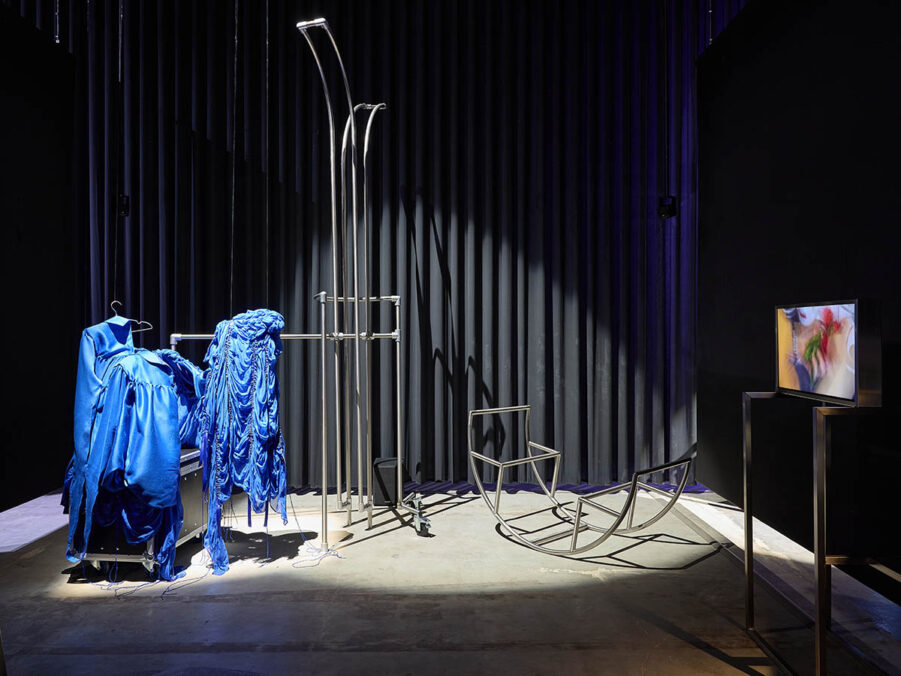
In my experience, a costume is often the starting point and catalyst for a performance. It holds its own agency, capable of influencing body language, movement, and narrative direction. How does a costume, or in our case, a costume-turned-sculpture, work as a tool for altering how we perceive reality and shaping a particular physical presence? Can we communicate memories by influencing the body of the person wearing the ‘costume’ within a space?
We scrutinized the research material, searching for nuances between the lines, as explicit statements describing concrete gestures weren’t present. Instead, we identified certain bodily sensations of movement in repetitive actions or rituals described by women. Then, at the studio with Camilla Anvar, we recreated movements and gestures, analyzing their transitions in relation to body and space by 3D scanning and composing into 3D sequences. These experiments determined more precise forms for the sculptures that you can see in the pavilion. Now it’s up to the audience to experience these embodied memories and decide how they affect them, physically or emotionally.

Which role did traditional techniques play in the production of the pieces, and how did they intertwine with contemporary technology?
The project explores the new ways we engage with our cultural heritage. I harbor a great passion for the art of suzani, an ancient type of embroidery that I remember in my grandmother’s house as long as I remember myself, as well as traditional patchwork and woven textiles (particularly blue beqasam with black stripes, a local Tashkent fabric used for everyday garments). On the other hand, I am also passionate about new technologies and work professionally with augmented reality and AI, which became crucial tools for me when I could not work with physical spaces during the pandemic.
The identities of my generation are intertwined with the evolving landscape of technology and the internet. For us, it’s a realm of escapism, a platform for self-expression and discovery, and a hub for forging new bonds through collective efforts and grassroots initiatives. The digital space becomes our shared workplace, connecting us regionally, nationally, and globally, despite the threads of our individual migratory journeys.
We navigate a fascinating dichotomy: exploring cyber identities through technology that promises to eliminate divisions and decentralize power dynamics, while also reclaiming and celebrating traditional crafts and heritage. Yet, this isn’t a dilemma but an intersection of possibilities. These paths offer a unique opportunity to blend facets of our identity. Technology, in our context, is not an end in itself; instead, it is a means through which we reimagine our interactions with our heritage, viewing traditional arts and crafts, especially those that have tended to be labeled ‘feminine’, as a unique language and communication tool in their own right.

For example, I asked: How can we infuse suzani with new meanings that resonate with our contemporary experiences? I trained a custom AI image generator to analyze and reimagine suzani patterns, a visual language encoding women’s unwritten stories for centuries. The final work reveals biases in technological structures, often unaware of the nuances of Central Asian culture. It prompts reflection on collective memory, questioning how AI technologies have reshaped the process of constructing shared memories in the context of globalization.
The theme of remembering—or trying to remember, synthesize, and categorize with technology—extends to the other textile elements of the installation. The costume-like sculptures show a process of defragmentation; these snippets of embodied memories—signatures, body postures, and interactions—are synthesized with digital tools and recreated into tangible forms. Blue patchwork curtains faintly depict my old family home, hazy, as if a neural network were retrieving information from the collective knowledge pool to fill memory gaps and gradually enhance clarity.
What else is in the program in the next few months in the Uzbekistan Pavilion at the Venice Biennale?
With the teams of the Uzbekistan Art and Culture Development Foundation and the Centre for Contemporary Art Tashkent, we are currently developing the exhibition catalog, which will offer an in-depth exploration of the exhibition’s background and research. This comprehensive publication will document the entire journey from initial conceptualization to the final result, providing readers with a behind-the-scenes look at the creative process.

In addition to showcasing the artworks and installations, the catalog will highlight the diverse voices and experiences of all those involved in the project, emphasizing the collaborative nature of our endeavor. We plan to include essays and texts that explain the themes and concepts explored in the pavilion while situating them within a broader academic and cultural context. By incorporating these kinds of analyses, we aim to enrich readers‘ understanding of the exhibition’s themes, such as the intersection of technology and tradition, the reimagining of cultural heritage, and the exploration of identity in a globalized world.
In the end, what are some must-sees and experiences in Uzbekistan?
If you’re in Tashkent, be sure to visit the Chorsu and Yangiobod markets. Some of our favorite spots are in Khiva, Bukhara, and Nukus, including the Savitsky Museum of Art. Anastasia highly recommends Aydarkul, a lake located between Jizzakh to the east and Nurata to the west. The Ferghana Valley is fantastic for discovering local crafts. Honestly, incredible experiences await you around every corner in Uzbekistan.
Duration: 20th April – 24th November 2024
Location: ARSENALE
Aziza Kadyri – www.instagram.com/aziza.kadyri
Qizlar Collective – www.instagram.com/qizlarqizlarqizlar/
Uzbekistan National Pavilion – www.instagram.com/uzbekistan_national_pavilion




